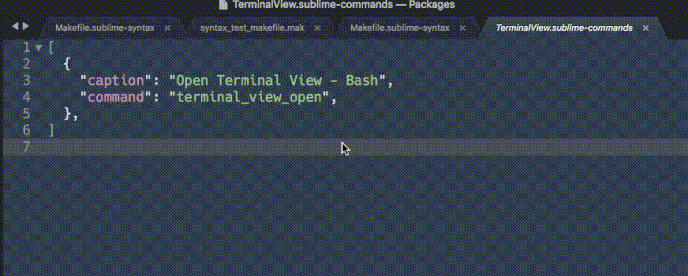

Sublime Text SFTP Spend less time managing file transfers and more time coding. Allows to display “file modified date” and “file size” on statusbar (may be a bit buggy).Preference to control if a buffer should be closed when affected by a deletion operation.Copy paths as URIs, URLs, content as UTF8, content as data:uri base64 ( nice for - embedding into CSS! ), copy as tags img/a/script/style, duplicate.New file/folder, edit, open/run, reveal, find in selected/parent/project, cut, copy, paste, paste in parent, rename, move, delete, refresh….Close, move, open and restore buffers affected by a rename/move command.Notably provides delete as “move to trash”, open with.Provides enhancements to the operations on Sidebar of Files and Folders for Sublime Text. It's heavily inspired by Atom File Icons. It supports various functions : conspicuous widgets (clock, weather) on sidebar, manually or adaptively tweakable theme colors, controlling status bar label by its own api.Ī File Icon This package adds file-specific icons to Sublime Text for improved visual grepping. Guna is most innovative theme for sublime text 3. Sublime Text has accompanied me from learning for the first time to write the word "Hello World" using Python until I am working at this time. As for me, I am only a poor human being who doesn't really like to follow developer or programming trends, even I didn't go to school. This question arose 2 years ago when I worked at a company where there were many of them "Graduates" from Technology universities. Wasn’t to hard really.How have I stayed comfortable with Sublime Text for approximately 5 years? Just done with a basic symlink and addition of the path to the bash profile. Well, we now have the option to run sublime from the command line and open files or folders. Or even the entire current directory: sublime. Or run the following command to open a directory: sublime foldername (replace "foldername" by an actual folder name) Open a Terminal window to test stuff now and run the following command: sublime filename (replace "filename" by an actual file name) In my case with everything brand spanking new that is just what I had to do. bash_profile with the newly added directory. If you had to add /usr/local/bin to your PATH, run the following command before continuing: source ~/.bash_profile That is what I had to do as I just got a new MBP and therefore had not much history as of yet using command line voodoo. If you don’t already have a PATH set in your bash_profile you can type: export PATH=/usr/local/bin:$PATH Note: The ‘(…)’ in this example represents other folders that would be listed on the same line and separated by a colon. If not, simply add it like this and save the file: export PATH=/usr/local/bin:(.) Since we create a symlink to subl called sublime in the /usr/local/bin directory let’s check if this directory is listed on that same line. This contains all the directories that will be looked into for executable binaries when you type a command in Terminal. You should see at the top of the file a line that starts with: export PATH= (In some cases the profile file is named ~/.profile). Now let’s do a check to see if everything will run smoothly. This will simply create a symlink called sublime (remember, we like names that don’t suck to type 500 times a day) between the subl binary stashed in the Sublime application package, and a folder where your system usually looks for binaries to execute (launch). Symlink Creation ln -s "/Applications/Sublime Text.app/Contents/SharedSupport/bin/subl" /usr/local/bin/sublime
#Open sublime text 3 from terminal how to
This and one or two more steps to tell Bash where the command is located and how to remember it.

This will basically allow the installation of the sublime command. Installationįirst thing we do is create a symlink to make the app link to the bin folder to trigger it as a command from the command line. Suggestions there are not followed as we do a slightly adjusted setup based on Artero’s recommendations. You can find more details about subl here: .

open /Applications/Sublime\ Text.app/Contents/SharedSupport/bin/subl If this following line opens Sublime Text for you, then bingo, you’re ready. This utility is hidden in the following folder (assuming you installed Sublime in /Applications like normal folk.

Sublime Text 3 ships with a CLI called subl (why not “sublime”, go figure). Textmate ads it to your path for you, but for Sublime you have to do all the legwork yourself. Something I missed after moving from TextMate to it. It explains how you can get Sublime 3 to work from the command line. A fork I have adjusted and updated some more in this blog post. Text below is a gist fork of gist by Artero with basic adjustments to use Sublime Text 3 from Command Line in OSX.


 0 kommentar(er)
0 kommentar(er)
